From a despised invasive plant, thanks to experts’ efforts to “clear its name,” it has become a “money-making” crop.
The Invasive Plant Species
In the 1970s, in China, a type of climbing plant became popular as an ornamental plant. This plant is known as Japanese Malabar Spinach, and it resembles the common spinach found in Vietnam. The main difference is that the stem of the Japanese Malabar Spinach produces many small “tubers.” These tubers cling to the stem, making the vines quite heavy; when fully grown, they can topple large trees they wrap around.
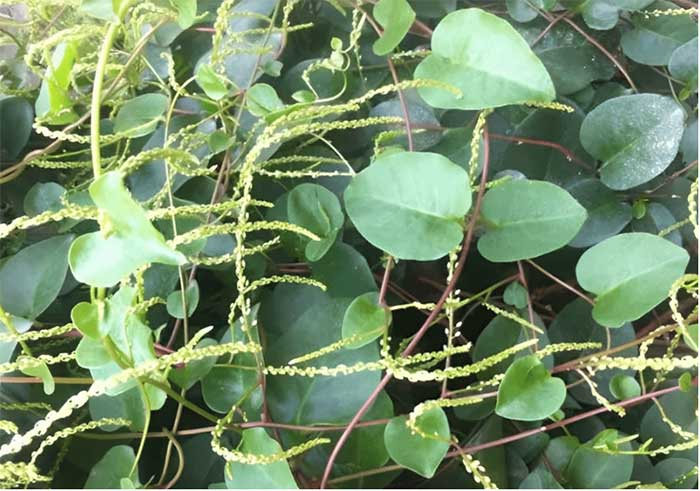
The plant that was widely grown as an ornamental plant in China is Japanese Malabar Spinach. (Photo: Sohu).
According to descriptions in botany books, Japanese Malabar Spinach is a climbing, succulent plant belonging to the Basellaceae family. It has evergreen leaves, growing from tubers. The leaves are green, thick, heart-shaped, smooth on the surface, and measure about 4-13 cm in length. In autumn, the plant produces small white flowers that grow in clusters up to 30 cm long, emitting a fragrant scent.
Japanese Malabar Spinach can spread easily because it reproduces through tubers and rhizomes; even a small piece can grow into a new plant. However, the plant has both male and female flowers, so it can also reproduce by seeds. Originally from South America, it has spread to Africa, Australia, Europe, North America, and Oceania.
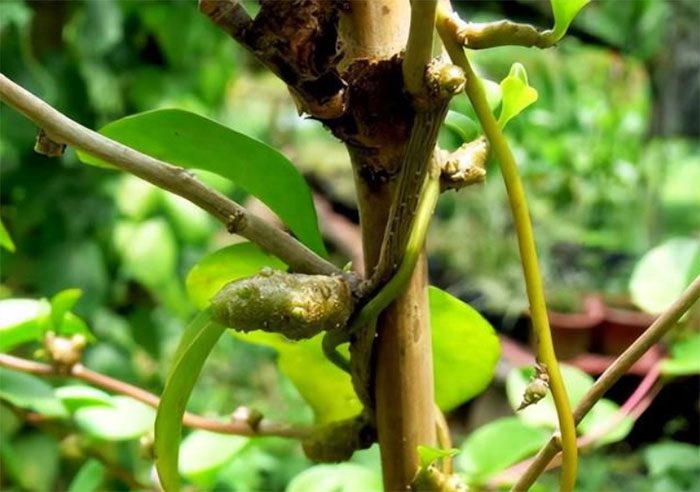
Japanese Malabar Spinach is a plant that spreads easily due to its tubers and rhizomes. (Photo: Sohu).
This plant does not thrive in direct sunlight, tolerates shade well, and can be grown year-round. If planted in moist and warm areas, Japanese Malabar Spinach will grow better.
Japanese Malabar Spinach was introduced to Asia in the 1970s, and just a few years later, it was listed by China as one of the invasive alien species causing significant damage to the nation. The reason is that this plant grows at an alarming rate; it can grow an additional 3 to 6 meters in just a few months. It can reproduce from tubers, stems, and roots; as long as it comes into contact with the soil, it can develop.
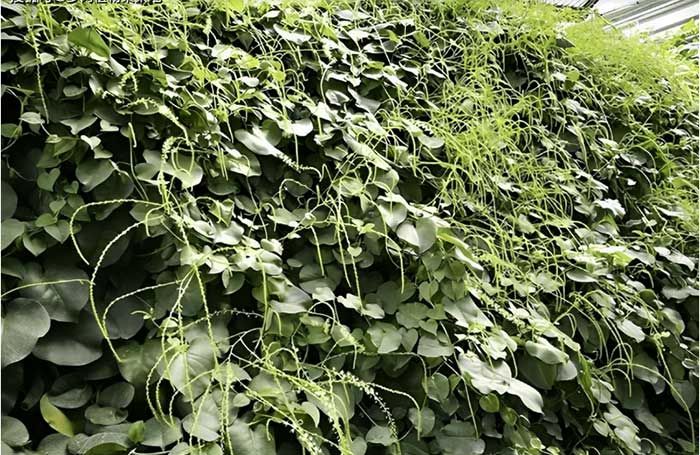
Japanese Malabar Spinach is an invasive plant that harms the ecological environment. (Photo: Sohu).
However, Japanese Malabar Spinach can pose a danger to the surrounding ecosystem. It often secretes substances that inhibit the growth and reproduction of nearby plants, even leading to their gradual death. The presence of Japanese Malabar Spinach has caused ecological imbalances and significant economic losses for farmers. Therefore, whenever the Chinese see Japanese Malabar Spinach, they will use knives to cut or burn it to prevent its spread.
The “Money-Making” Plant
Although in the 1970s, Japanese Malabar Spinach was classified as an invasive plant difficult to eradicate, after its “value” was recognized by scientists, it has become a “money-making” crop in China.
According to botanists, the change in perception among farmers regarding Japanese Malabar Spinach is due to four main reasons.
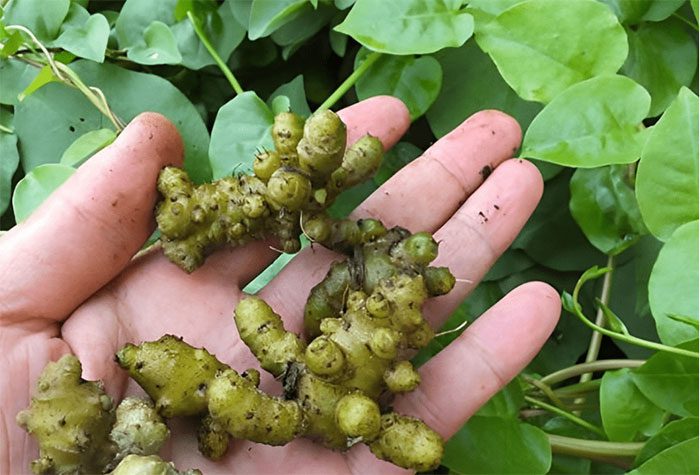
Japanese Malabar Spinach is not only an ornamental plant but also a medicinal herb. (Photo: Sohu).
First, Japanese Malabar Spinach is a rare medicinal herb. Every part of it can be used as medicine, with the tuber being the most commonly used part. Its tuber resembles ginger, and can be eaten raw. The tuber is bulbous, 0.5-3 cm in diameter, with a gray-brown surface. The tuber is very firm and brittle, easily broken. The cross-section of the tuber is gray-yellow or light white and slightly powdery, with a slightly bitter taste.
When processed into medicinal material, Japanese Malabar Spinach tubers stimulate blood circulation and are very effective in pain relief. Additionally, Japanese Malabar Spinach tubers can treat diabetes, colon inflammation, lung diseases, help lower blood pressure, and are used in cancer treatment… They are particularly suitable for athletes, middle-aged individuals, and the elderly. Many traditional Chinese medicine practitioners prefer to use Japanese Malabar Spinach tubers in treating various ailments because their medicinal properties are much stronger than those of other herbal plants.
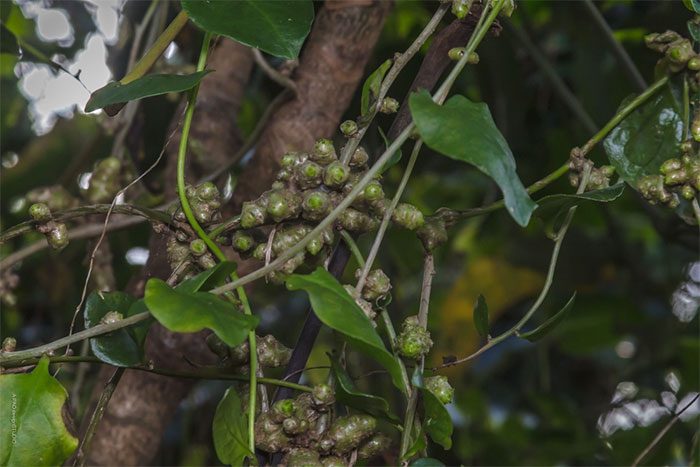
Japanese Malabar Spinach can be used as food. (Photo: Sohu).
Second, Japanese Malabar Spinach can be used as food. In many countries, the leaves of Japanese Malabar Spinach are used in cooking. They can be used in soups, stir-fries, or stewed with chicken, pork ribs, or in salads. The stem and roots can also be prepared into many delicious dishes.
Third, Japanese Malabar Spinach can be harvested year-round. In China, the price of Japanese Malabar Spinach tubers is quite high, ranging from 200 to 300 CNY (approximately 680,000 to over 1 million VND) per kilogram. Generally, after planting for one month, the plant can be harvested, and by the second month, the yield is significantly higher. Additionally, after harvesting, Japanese Malabar Spinach tubers are easy to preserve. Not only the tubers but also the leaves and stems can be sold.
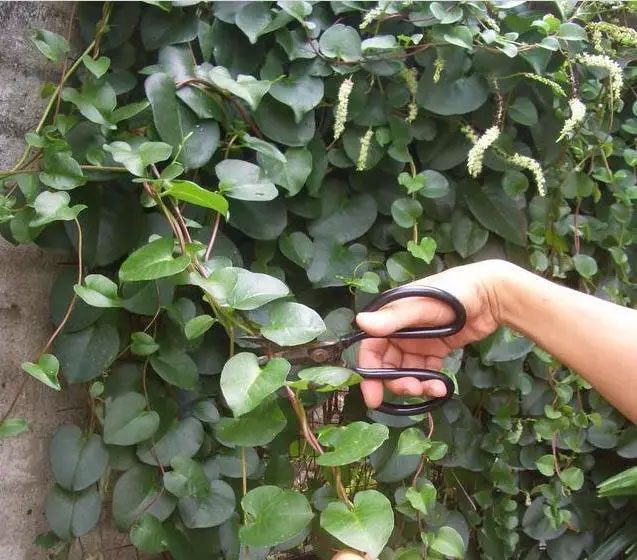
Japanese Malabar Spinach is a plant that is easy to grow and survive. (Photo: Sohu).
Fourth, this plant can be grown at any time of the year. Farmers can propagate it by using stems for cuttings or tubers for reproduction, and both methods have a very high survival rate.




















































